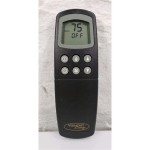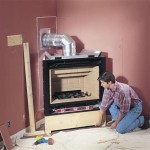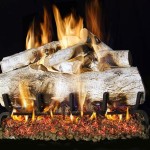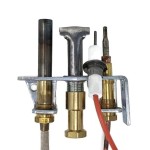It should focus on educating the reader, not persuading them.
Understanding Gas Fireplace Thermostats: A Comprehensive Guide
Gas fireplaces have become increasingly popular as a convenient and aesthetically pleasing alternative to traditional wood-burning fireplaces. One of the key components that contributes to the ease of use and efficiency of a gas fireplace is its thermostat. The thermostat plays a vital role in maintaining a consistent and comfortable temperature within a room, while also optimizing fuel consumption. This article provides a comprehensive overview of gas fireplace thermostats, covering their functionality, types, operation, troubleshooting, and considerations for replacement.
A gas fireplace thermostat is a control device that regulates the amount of gas supplied to the burner based on the desired temperature. It functions by sensing the ambient temperature of the room and adjusting the gas flow accordingly. When the room temperature falls below the set point on the thermostat, it signals the gas valve to open, allowing gas to flow to the burner, thus generating heat. Conversely, when the room temperature reaches the set point, the thermostat signals the gas valve to close or reduce the gas flow, thereby reducing or stopping heat production. This cyclical process ensures that the room temperature remains relatively stable and comfortable.
Types of Gas Fireplace Thermostats
Gas fireplace thermostats can be categorized into several types, each with its own characteristics and operational mechanisms. Understanding these different types is crucial for selecting the most appropriate thermostat for a specific gas fireplace model and user preferences.
Millivolt Thermostats: Millivolt thermostats are perhaps the most common type found in gas fireplaces. These thermostats operate on a very low voltage, typically ranging from 250 to 750 millivolts. This voltage is generated by a thermopile located within the fireplace, which is heated by the pilot light. The thermopile converts heat energy into electrical energy, which then powers the thermostat. Millivolt systems are known for their simplicity, reliability, and independence from external power sources, making them a favorable choice for areas prone to power outages. The absence of reliance on external power ensures that the fireplace can continue to operate even without electricity. These systems typically involve a manual knob or dial to set the desired temperature.
Electronic Thermostats: Electronic thermostats utilize electronic components to sense temperature and control the gas valve. These thermostats require an external power source, such as a standard electrical outlet or batteries, to operate. They often feature digital displays and programmable settings, allowing for greater precision and customization in temperature control. Electronic thermostats may also incorporate features such as timers, remote control compatibility, and energy-saving modes. While they offer more advanced functionality, electronic thermostats are dependent on a consistent power supply, and their operation may be disrupted during power outages. The increased complexity might also translate to a higher cost for repair or replacement.
Remote Control Thermostats: Remote control thermostats offer the convenience of adjusting the fireplace temperature from a distance. These thermostats typically consist of a receiver unit located near the fireplace and a handheld remote control. The remote control communicates with the receiver unit via radio frequency (RF) or infrared (IR) signals, allowing the user to adjust the temperature, turn the fireplace on or off, and set timers without having to manually interact with the thermostat. Remote control thermostats are often compatible with both millivolt and electronic systems, providing added flexibility. However, the reliance on batteries for the remote control and the receiver unit necessitates periodic replacement to ensure continued functionality.
Smart Thermostats: Smart thermostats represent the latest advancement in gas fireplace control technology. These thermostats connect to a home's Wi-Fi network, allowing users to control the fireplace remotely via a smartphone app or other connected devices. Smart thermostats often incorporate advanced features such as geofencing, which automatically adjusts the temperature based on the user's location, and voice control compatibility with virtual assistants like Amazon Alexa or Google Assistant. Smart thermostats can also learn user preferences and optimize energy consumption over time. These thermostats offer the most advanced control and monitoring capabilities, but they require a stable Wi-Fi connection and may involve a higher initial cost. Security considerations are also relevant when connecting a gas appliance to a home network.
Operating a Gas Fireplace Thermostat
Operating a gas fireplace thermostat is generally a straightforward process, but it's essential to understand the specific instructions for the particular type of thermostat in use. Regardless of the type, certain basic principles apply.
Setting the Desired Temperature: The primary function of a thermostat is to maintain a desired temperature. With manual thermostats, this typically involves turning a knob or dial to the desired temperature setting. Electronic thermostats may have buttons or a touchscreen interface for setting the temperature. It's important to allow the fireplace sufficient time to reach the set point after making adjustments. Overly frequent adjustments can lead to inefficient operation and temperature fluctuations.
Understanding Thermostat Settings: Many thermostats offer different settings beyond simply setting the desired temperature. For instance, some thermostats may have a "pilot" setting, which keeps the pilot light burning continuously. This setting is often used in colder climates to prevent the gas line from freezing. Other settings may include "on/off" or "high/low" modes, which control the overall heat output of the fireplace. Understanding the purpose of each setting is crucial for optimizing energy consumption and maintaining a comfortable environment.
Using Remote Control Features: For remote control thermostats, the primary operation involves using the handheld remote to adjust the temperature and other settings. It's important to ensure that the remote control has fresh batteries and that it is within range of the receiver unit. Some remote controls may also have advanced features such as timers or programmable settings. Refer to the remote control's user manual for specific instructions on utilizing these features.
Programming Smart Thermostats: Smart thermostats offer the most advanced programming capabilities. Users can typically create custom schedules to automatically adjust the temperature based on the time of day or day of the week. Smart thermostats may also integrate with other smart home devices, allowing for coordinated control of the entire home's heating and cooling systems. Setting up and configuring a smart thermostat typically involves downloading and installing a smartphone app and following the on-screen instructions.
Troubleshooting Common Thermostat Problems
Even with proper care and maintenance, gas fireplace thermostats can occasionally encounter problems. Recognizing common issues and knowing how to troubleshoot them can prevent costly repairs and ensure the safe operation of the fireplace.
Thermostat Not Responding: One of the most common problems is a thermostat that does not respond to adjustments. If the thermostat is not responding, the first step is to check the power source. For electronic thermostats, ensure that the unit is plugged into a working outlet or that the batteries are fresh. For millivolt thermostats, check the pilot light to ensure that it is lit and properly heating the thermopile. A dirty or malfunctioning thermopile can prevent the thermostat from receiving sufficient power. If the power source is not the issue, the thermostat itself may be faulty and require replacement.
Inaccurate Temperature Readings: Another common problem is a thermostat that provides inaccurate temperature readings. This can lead to the fireplace cycling on and off frequently or failing to maintain the desired temperature. Inaccurate readings can be caused by a variety of factors, including a faulty temperature sensor, improper placement of the thermostat, or drafts affecting the thermostat's readings. Ensure that the thermostat is located away from direct sunlight, drafts, and other sources of heat or cold. If the problem persists, the temperature sensor may need to be recalibrated or replaced.
Pilot Light Issues: The pilot light is an essential component of many gas fireplace systems, particularly those with millivolt thermostats. If the pilot light goes out frequently or is difficult to light, this can indicate a problem with the gas supply, the thermocouple, or the pilot assembly. Check the gas supply to ensure that it is turned on and that there is sufficient gas pressure. A faulty thermocouple, which is a small metal rod that senses the heat from the pilot light, can prevent the gas valve from staying open. The pilot assembly may also be clogged with debris, preventing the pilot light from burning properly. Cleaning the pilot assembly and replacing a faulty thermocouple can often resolve these issues.
Gas Valve Problems: The gas valve is responsible for controlling the flow of gas to the burner. A malfunctioning gas valve can prevent the fireplace from turning on or off, or it can cause the fireplace to operate erratically. Gas valve problems can be caused by a variety of factors, including a faulty solenoid, a clogged valve, or a damaged diaphragm. A gas valve should only be worked on by a qualified technician due to the potential safety hazards involved. Attempting to repair a gas valve without proper training and equipment can be dangerous and could result in a gas leak or explosion.
Remote Control Issues: For remote control thermostats, problems can often arise with the remote control itself. Common issues include dead batteries, a faulty transmitter, or interference from other electronic devices. Ensure that the remote control has fresh batteries and that it is within range of the receiver unit. Try resetting the remote control by removing the batteries and pressing all of the buttons simultaneously for several seconds. If the problem persists, the remote control may need to be replaced or reprogrammed. Check for interference from other electronic devices and try repositioning the receiver unit to improve the signal strength.
Considerations for Thermostat Replacement
If a gas fireplace thermostat is beyond repair or no longer meets the user's needs, replacement may be necessary. When selecting a replacement thermostat, several factors should be considered to ensure compatibility and optimal performance.
Compatibility: The most important consideration is ensuring that the replacement thermostat is compatible with the existing gas fireplace system. This includes verifying the voltage requirements (millivolt vs. electronic), the type of gas valve (standing pilot vs. intermittent pilot), and the wiring connections. Consult the fireplace manufacturer's specifications or a qualified technician to determine the correct replacement thermostat model. Installing an incompatible thermostat can damage the fireplace system or create a safety hazard.
Features and Functionality: Consider the desired features and functionality when selecting a replacement thermostat. Do you need a programmable thermostat, a remote control, or smart home integration? Electronic thermostats offer more advanced features than millivolt thermostats, but they also require an external power source. Remote control thermostats provide added convenience, but they rely on batteries and may be subject to interference. Smart thermostats offer the most advanced control and monitoring capabilities, but they require a stable Wi-Fi connection and raise security considerations. Choose a thermostat that meets your specific needs and preferences.
Installation: Thermostat installation can range from relatively simple to quite complex, depending on the type of thermostat and the existing wiring. Simple millivolt thermostats can often be installed by homeowners with basic electrical knowledge, but more complex electronic or smart thermostats may require professional installation. If you are not comfortable working with electrical wiring or gas appliances, it's best to hire a qualified technician to install the thermostat. Improper installation can damage the thermostat, the fireplace system, or create a safety hazard. Always follow the manufacturer's instructions carefully and exercise caution when working with electrical wiring.

Skytech Ts 3 Wired Wall Mounted Thermostat Fireplace Control

Flameworks Gas Fireplace Thermostat Non Programmable Vertical Mount Fire Parts Ca

Wired Wall Thermostat Millivolt For Fireplaces Hechler S Mainstreet Hearth Home Troy Missouri

Fireplace Thermostats Remote Controls Friendly Fires

How To Connect A Nest Thermostat Gas Fireplace Ohmefficient

Flameworks Gas Fireplace Thermostat Non Programmable Vertical Mount Fire Parts Ca

Wifi Fireplace Wall Thermostat Friendly Fires

Gas Fireplace Wall Thermostat B C Comfort Hvac Repair Installation

Can You Add A Thermostat To Gas Fireplace Croft

Nest Gen 2 Thermostat With Gas Fireplace Or Other Millivolt System 5 Steps S Instructables
Related Posts








